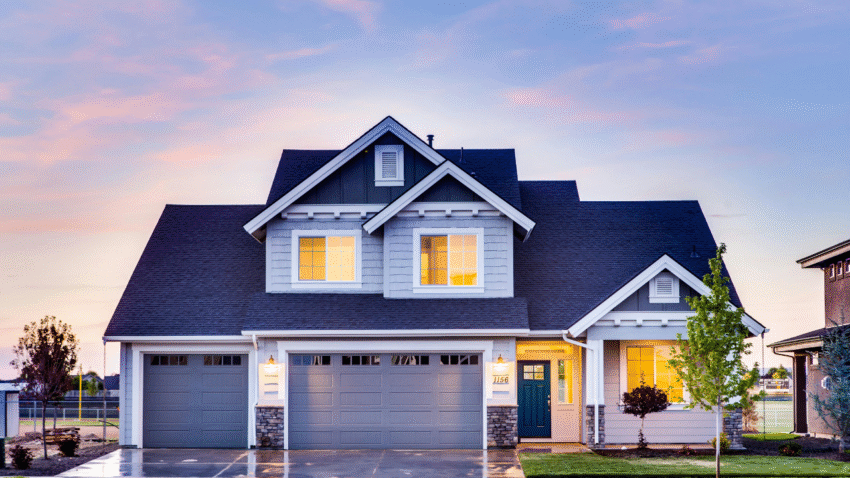Introduction
Water damage in your garage can be a nightmare. Whether it’s caused by heavy rain, a leaky roof, poor drainage, or a burst pipe, excess moisture can ruin walls, floors, stored items, and even the structural integrity of your garage. In this guide, you’ll learn how to repair water damage in the garage step-by-step, from assessing the problem to preventing it from happening again.
Why Repairing Water Damage Matters for Your Garage
Water intrusion in the garage can cause more than just unsightly stains. If left untreated, it can lead to:
- Structural damage to walls, floors, and the foundation.
- Mold and mildew growth, which can affect air quality and health.
- Rust and corrosion on tools, vehicles, and storage systems.
- Decreased property value due to visible damage and ongoing problems.
Addressing water damage promptly helps preserve your garage’s functionality, safety, and appearance.
Step-by-Step Guide to Repairing Water Damage in the Garage
1. Identify the Source of Water
Before you start repairs, find and stop the source of the water. Common causes include:
- Roof leaks
- Cracked foundation or walls
- Faulty garage door seals
- Plumbing leaks
- Poor grading or drainage around the garage
Inspect both inside and outside the garage to locate the entry point. Repairing the source first is essential—otherwise, your fixes won’t last.
2. Clear the Area and Protect Belongings
Move vehicles, tools, and storage bins away from the damaged area. Place valuable items in a dry location, and cover them with plastic sheeting to protect them from further moisture exposure.
3. Remove Standing Water
If there’s pooling water, remove it immediately using:
- A wet/dry shop vacuum
- A squeegee and mop
- A submersible pump for larger amounts
The faster you remove water, the less damage will occur.
4. Dry Out the Garage
Moisture can linger long after standing water is gone. Speed up the drying process by:
- Opening windows and doors for ventilation
- Using fans to circulate air
- Running a dehumidifier to pull moisture from the air
- Placing towels or absorbent pads on damp spots
Let the space dry completely before starting repairs—this may take 24–72 hours depending on severity.
5. Inspect for Structural and Surface Damage
Once dry, check for:
- Warped wood or swollen baseboards
- Cracked or flaking concrete
- Stained or softened drywall
- Rust on metal shelves or tools
- Signs of mold (black, green, or white fuzzy patches)
Document the damage for insurance purposes if necessary.
6. Repair or Replace Damaged Materials
Concrete Floors:
- For small cracks, use a concrete patching compound.
- For large cracks or spalling, you may need to resurface the area.
Drywall and Trim:
- Cut out and replace water-damaged drywall sections.
- Replace baseboards or trim if swollen or moldy.
Wood Shelving or Framing:
- Sand and refinish if lightly damaged.
- Replace sections if warping or rot is extensive.
7. Treat and Remove Mold
If mold is present:
- Wear gloves, a mask, and safety goggles.
- Mix a cleaning solution of 1 cup bleach to 1 gallon of water.
- Scrub affected surfaces thoroughly.
- Let the area dry completely.
For extensive mold infestations, call a professional remediation service.
8. Repaint or Seal Surfaces
Once repairs are made, repaint walls or reseal concrete floors to protect them from future moisture. Use moisture-resistant paint or epoxy coatings for extra durability.
9. Address Drainage and Prevention
To avoid repeat water damage:
- Seal gaps around garage doors with new weatherstripping.
- Install gutters and downspouts to direct water away from the garage.
- Regrade soil around the foundation to slope away from the building.
- Install a sump pump if flooding is a recurring problem.
Common Mistakes to Avoid
- Ignoring the Root Cause
- Problem: Fixing only the visible damage without addressing the leak leads to repeat problems.
- Solution: Always repair the source before cosmetic fixes.
- Delaying Drying
- Problem: Mold growth can start in as little as 24 hours.
- Solution: Begin drying immediately after water exposure.
- Painting Over Damp Surfaces
- Problem: Traps moisture and leads to peeling paint or mold.
- Solution: Ensure surfaces are completely dry before painting.
- Using the Wrong Repair Materials
- Problem: Non-moisture-resistant materials will fail quickly.
- Solution: Choose water-resistant paints, sealants, and building materials.
- Skipping Mold Inspection
- Problem: Hidden mold behind walls can cause health issues.
- Solution: Check thoroughly for mold growth before closing up walls.
Extra Garage Tips & Hacks
- Install Shelving Off the Floor: Keeps belongings dry if minor flooding occurs.
- Use Moisture Absorbers: Place desiccant packs or moisture-absorbing tubs in corners.
- Seal Garage Floor Joints: Prevents water from seeping into cracks.
- Related Tip: See our guide on how to replace garage door seals for improved moisture defense.
Conclusion
Learning how to repair water damage in the garage is about more than restoring appearance—it’s about protecting your property from long-term harm. By quickly identifying the source, drying the space, repairing damaged materials, and taking preventive measures, you can restore your garage to a safe, functional, and clean condition.
Bookmark this guide to keep your garage protected, organized, and damage-free year-round.
